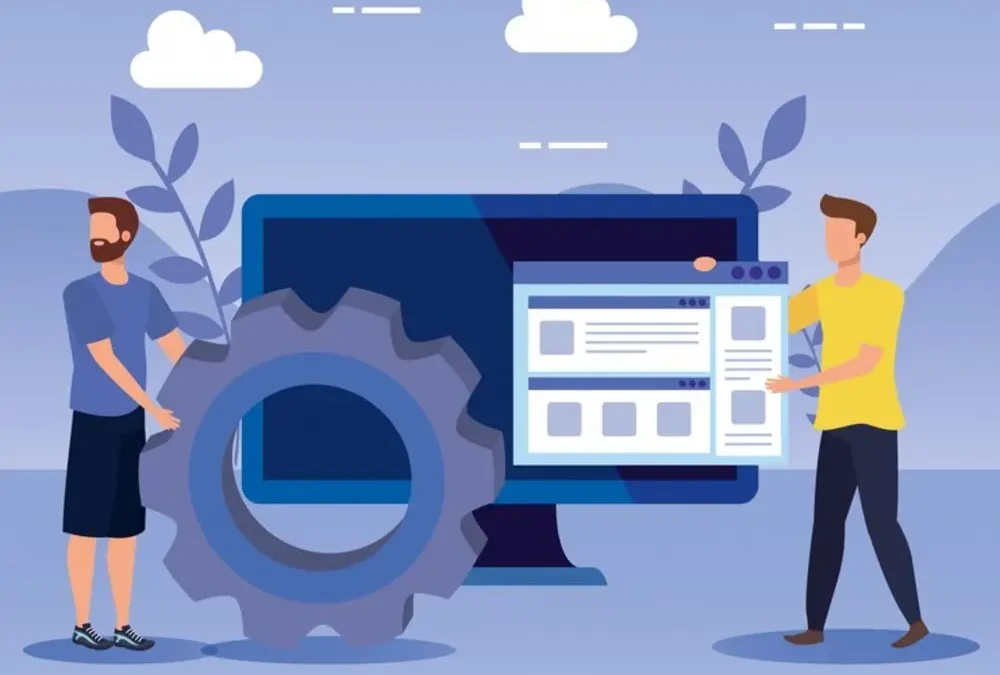In the fast-paced world of digital life, when content must reach a user on websites, applications, digital kiosks, and smart devices, traditional content management systems do not quite measure up. Legacy CMS products were almost exclusively designed for websites, thus limiting both their value as repositories of content and how that content could be accessed. Headless CMS is becoming more organizations turn towards to allow better flexibility, scalability, and the ability to deliver content across all devices and platforms. This essay describes headless CMS, how it works, and why it should be preferred as the smarter solution to websites that need content the most.
What Is a Headless CMS?
Unlike traditional systems, It is the same system that handles the front-end (the website you see) and the back-end (where content is stored and managed). A headless CMS severs this linkage, making it only concerned about the management and storage of content, the “body,” while leaving the “head,” or front-end presentation, to developers. Content is delivered through APIs (Application Programming Interfaces), enabling developers to employ any technology or platform for displaying that content. This decoupling allows businesses significantly more control and flexibility regarding how their content looks, where it looks, and how quickly it can be updated. It is no longer tied to a specific website or app; the CMS is free to deliver content anywhere it is required.
Advantages Over Traditional CMS Platforms:
- More Flexible: First, headless CMS are inherently flexible. There is a complete decoupling of content from front-end display, thus allowing developers the choice to craft their own user interfaces in whatever technology they prefer, such as React, Vue, or Next.js, which would not be the case with an out-of-the-box templated CMS. In this manner, enterprises can rapidly create user-centric websites and applications that reflect their branding needs and end-user requirements.
- More Scalable: Second, headless CMS is more scalable. Headless CMS will fit very well into a business need of increasing content delivery on new platforms-whether that’s mobile apps, smart TVs, or voice assistants-very easily. Since the delivery of this content is done through APIs, it can be integrated almost anywhere with minimal effort. This is what makes it perfect for omnichannel marketing, wherein customers expect a consistent experience across each and every touchpoint.
- More Secure: Third, headless CMSs are more secure and performance-oriented. When it comes to traditional CMSs, they always pose a security threat because they expose both the front end and back end. In a headless CMS, you decouple the content management interface from the public one, thus minimizing the overall attack surface. It also allows developers to incorporate CDNs and static site generators for faster page loads, thereby enhancing performance.
Delivering Content Across Platforms and Contexts:
One of the core features of a headless CMS, and one of the strongest, is that it enables omnichannel content delivery. Within traditional CMS, normally, you only create content once and display it on the website. Today, however, users have access to content from various devices: phones, tablets, smartwatches, apps, voice assistants, etc.
One headless CMS can break this problem, allowing the creation of content once and using it everywhere. If the project is a blog or the content on the e-commerce app, or a smart TV interface, or a chatbot, it will be delivered through APIs, onto each of the above platforms. This saves content teams from unnecessary time-consuming processes, allowing them to work efficiently and keep a consistent look and feel across all digital channels.
Take an example of a clothing brand that is launching a new collection. With a headless CMS, the product descriptions, images, and promotional content could all appear at the same time across their website, mobile app, in-store digital billboards, and e-mail chatter, and perhaps even via voice devices like Alexa. This seamless flow of content helps a business engage with users, no matter where they are.
Use of Headless CMS in Industries:
1. E-Commerce Websites:
Speed, flexible layouts, platform integration like mobile app and marketplace integration, are some of the key requirements of online stores. A headless CMS helps retailers update product content from one spot and deliver it everywhere at once.
2. SaaS Companies:
The marketing sites, blogs, help centers, and in-app messages of software-as-a-service companies are in constant flux. The headless CMS enables content teams to make changes without constant intervention from development. APIs can be used to push content into the web app, mobile app, or user dashboard.
3. News & Publishing:
The media need to quickly edit articles to send out to websites, mobile apps, newsletters, or social media. The headless CMS allows them to write once and publish everywhere, ensuring low editorial turnaround time.
4. Educational Platforms:
Colleges or online learning services typically manage content for websites, learning applications, portals, and newsletters. A headless CMS helps maintain consistency in the delivery of learning materials and updates across all channels.
How Our Agency Implements Headless CMS:
We modernize content systems by linking companies to headless CMS platforms like Contentful, Strapi, or Sanity. The content creators have freedom, and developers build high-performing front-ends without limitations set by the CMS.
We begin by understanding the needs of the client. If the client publishes content on a regular basis, works with more than one platform, or just wants more speed and flexibility, then headless CMS is the most applicable choice. We assist in choosing the right platform according to their scale, budget, and use case.
We then assist in migrating existing content or developing a new content structure. The next step is that our developers connect the CMS to the front-end using modern frameworks such as Next.js for building fast SEO-compliant websites. We also set up webhooks to allow a content update to trigger an automated rebuild and deployment of the website for overall system efficiency.
Most important is that we also train content teams to operate independently. The interface for the headless CMS is user-friendly and intuitive. Content writers can update blog posts, edit pages, and manage product information without coding. This diminishes the dependency on developers and accelerates the content workflow.
The most recent of our projects involved a fast-casual, growing B2B software company. They wanted the new site to launch and offer educational material within their app, via newsletters, or through the blog. We set up Contently as their headless CMS and connected it with their website, app, and email system. This way, the content team manages everything in one place, and content is updated in real time across all platforms.
Conclusion:
A headless CMS offers flexibility, scaling, and efficiency for modern businesses if they need to keep themselves competitive. Traditional systems lock the content to work only on a specific platform. The freedom of movement across websites, apps, and other digital touchpoints is built into the headless CMS idea. In this sense, it allows developers to quickly create more responsive experiences while granting content teams the freedom to operate independently. As digital histories multiply and vary, the call for an increasingly more agile solution for managing digital content will grow without stopping. Our agency implements the headless CMS to help soft-proof our clients’ content strategies to reach more users, adapt faster, and scale without limit.
“Revolutionize Content Delivery with Headless CMS”
Free your content from platform restrictions and deliver seamless, scalable experiences across websites, apps, and digital platforms with a flexible, API-driven Headless CMS.
Got time? Explore more!
Case Study: How We Helped a Mid-Sized Company Optimize Their Mobile App’s Performance
Three people with VR headsets analyzing a digital dashboard of business data, highlighting data-driven decision making.
Data-Driven Decision Making: Your Competitive Edge
Three people with VR headsets analyzing a digital dashboard of business data, highlighting data-driven decision making.
Leveraging Machine Learning to Enhance Customer Experience
understand the critical importance of Responsible and Ethical AI in building customer trust




